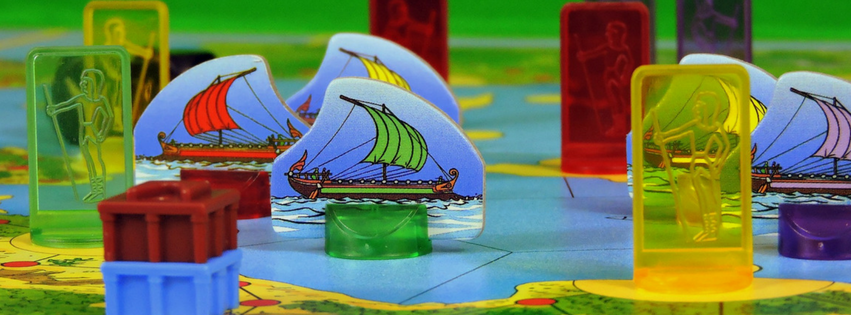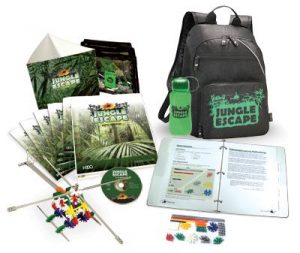
Game-based Learning
Game-based Learning (GBL) emerged on the academic and enterprise scene in the late 1990s. GBL encompasses fun, play, engagement, serious learning, and interactive entertainment. GBL is a pedagogical (K-12) or andragogical (adult) approach to learning that may be defined as:
Game-Based Learning is often considered a disruptive learning approach and is founded upon two key premises that are emerging within the fields of education, learning, training and development (LTD):
- Learning engagement is being transformed by significant changes in education and training
- Generation X, Y, and Z have grown up with critical and deep computer and video games experience
GBL is founded upon serious games, simulations, and gamification. GBL, when constructed with discernable and pragmatic learning outcomes, can create interactive experiences that actively engage the players in the learning process. Experimentation, graceful failure, and identification of lessons learned can result from a game-based learning environment, where decisions and actions are chosen, consequences experienced, goals are achieved, and feedback furnished. Risks are mitigated and a sense of discovery is instilled in the player.
Serious Games
At the same time, card-based games, 2-dimensional board games, and 3-dimensional (Virtual Reality) serious games can present employees with compelling challenges and quests set within realistic experiential environments. The beginning of 2002 marked the launch in the use of the phrase “serious games.” Djaouti, Alvarez, Jessel, & Rampnoux (2011) in Origins of Serious Games provide a very thorough treatment of the evolution of the concept “serious games.” Serious games may be defined as:

Serious games are packaged stand-alone training and development activities, such as Jungle Escape, Mars Rover Challenge, or Bridging the Communication Divide, that may come in the form of a simulation, but not all simulations are serious games.
Christopher Pappas outlines the broad range of benefits that serious games offer for online training courses:
- Improve Online Learner Engagement
- Facilitate Real World Application
- Provide Personalized Feedback
- Simplify Complex Subjects
Simulations
Simulations narrow the focus of serious gaming. Simulation is the imitation of reality, recreating an alternative reality within a controlled environment. Simulations have been used for millennia for training, entertainment, and explanation. The games of Go, Chess, or Risk are representative, well-known simulations, while less visible GBL sims would include SimCity; Harvard’s Case Study: Columbia’s Final Mission; or Planet Jockey Leadership Development.
Simulations combine and encompass a range of multi-sensory experiences: video, audio, motion, haptic, and olfactory. Simulations are often categorized into three genres: live, virtual, and constructive. Of course, any simulation could combine two or even three of the categories. For much of the learning within GBL, the sim involves human interactions, as opposed to science-based sims that require the individual to observe or measure something (i.e., a physics, chemistry, or math sim). UCF defines the three virtual genres as follows:
- Live simulations typically involve humans and/or equipment and activity in a setting where they would operate for real. Think war games with soldiers out in the field or manning command posts. Time is continuous, as in the real world. Another example of live simulation is testing a car battery using an electrical tester.
- Virtual simulations typically involve humans and/or equipment in a computer-controlled setting. Time is in discrete steps, allowing users to concentrate on the important stuff, so to speak. A flight simulator falls into this category.
- Constructive simulations typically do not involve humans or equipment as participants. Rather than by time, they are driven more by the proper sequencing of events. The anticipated path of a hurricane might be “constructed” through application of temperatures, pressures, wind currents and other weather factors. Science-based simulations are typically constructive in nature.
Sims, as serious games, provide participants with the capability to model decisions and outcomes, build group decision-making consensus and negotiate team approaches to problem-solving, critical thinking, and critical analysis. Simulations are analog and digital tools used to support the construction of immersive experiential learning environments.
Gamification
Gamification may be defined as the process of integrating game theory and design, game elements, game aesthetics, and game mechanics into a learning experience. Gamification of processes, products, and services increases engagement in employees, managers, and customers. The results can be demonstrated in terms of:
- creative thinking
- effective and efficient workplace and customer service activities
- improved participation and loyalty
- increased knowledge acquisition and application within educational and learning activities
- increased performance management
- innovative business practices
- organizational and cultural transformation
Representative Traits of Gamification
Gamification can be described as embedding:
Gamification in private, non-profit, and public sector initiatives builds passion, rigour, organization, discipline, resiliency and grit. Soft skills, which normally are difficult to convey except through coaching and mentoring, become easier to convey as the participants demonstrate mastering the competencies.
Gamification in business is an experience that helps:
- Improve the performance of employees
- Commit and take responsibility for learning
- Achieve and maintain engagement
- Promote transformational situations
- Open the mind to creative thinking and innovation
Gamification in businesses is not just the “funification” of work activities. Gamification creates a foundation for:
- cultivating leadership, teamship, followship, collaboration, and communityship traits
- improving soft skills, individual, and business unit performance
- focusing attention upon the workplace through personal and team reflection that can be described in terms of affect, behavior, and cognition (ABC)
- achieving learning and performance outcomes and goals
Conclusions
GBL in business must align with the learning goals and outcomes of training and development, and clearly demonstrate that learning can be evaluated and achieved. Serious game experiences drive personal change and transformation by generating an attitude of acceptance of the challenge, motivation to achieve, and constant innovation through participant commitments. Simulations push the participant into experiencing an immersive environment. Finally, gamification, as a collection of techniques, may be applied to educational and workplace activities, or used as a wrapper for GBL, serious games, and sims.
So, what does this field of game-based learning mean for Higher Ed IT? First and foremost, we will need faculty and instructional designers (ID), user experience (UX) engineers, and user interface (UI) specialists trained in the development, delivery and assessment of GBL learning environments. Twenty-five year ago university IT departments were very concerned with faculty members who did not know how to use and apply a LMS in the classroom. We have been on this path for 20 years, breeding a level of familiarity and ease with using the LMS technology effectively and efficiently. Yet we still have not achieved significant inculcation and adoption of this ed tech tool, especially considering its increased complexities. IT cannot lead this kind of initiative. IT needs to identify and ally with faculty members and IDs who are interested, engaged, and committed to getting these tools in the physical or virtual classroom.
The emergence of virtual and augmented reality technology in the context of interactive learning games is producing a unique and disruptive approach for educators.
Second, (and this deserves much more detailed attention), the emergence of virtual and augmented reality technology in the context of interactive learning games is producing a unique and disruptive approach for educators. The emergent educational technology could provide an agile, real-time, “green,” immersive learning environment where learners could engage in real-time games, simulations, and face-to-face interactions, the equivalent of being in a live classroom. Many textbooks will be eliminated via the introduction of experiential education. Nonetheless, technology components will be under constant upgrading and potential obsolescence.
Much of the virtual content will be tagged, tracked, analyzed, and reported on a business intelligence dashboard in a way we would never have had the capability to execute or deliver to faculty members. How will the collection and analysis of all this real-time data impact the privacy of the faculty member and learners? How can grades be supported for building and demonstrating mastery of a skill or competency, when projects are completed and delivered virtually? Our research today must explore, experiment with, and discover emerging technologies that build a totally experiential ecosystem for collaboration, innovation, and enriching learning outcomes.
Our final question might be “Should CIOs expect greater demand for these technologies from faculty and students?” Damn straight! CIOs must be prepared to support new and innovative approaches to acquire knowledge and learning and apply it to raising the standard of education in our institutions of higher education. A micro-level activity for IT might be making available 40 HTC Virtual Reality headsets for a History course. A meso-level activity for IT would be to make sure the edtech works, and that data is being broadcast and collected for evaluation of the learning outcomes that may be appropriately tracked to grade a virtual learning experience. The macro-level activity for IT would be to support the upskilling of faculty in how this technology may be applied to assess learning and to motivate learners to construct new knowledge and change behaviors in manners we never imagined could be done in a virtual space.
We are on a unique and unusual path to revitalizing and reinvigorating the educational experience. This new path is not about throwing a LMS at faculty and hoping it sticks. This new path is about creating faculty who are mentors, coaches, and life-long learners. Most faculty members I have met never bought into being an educator; they chose to become an instructor, and many of them are not that good at being a boring “sage on the stage.” Can IT take on the responsibility and accountability for building and equipping “guides on the side?”
Abt, C. C. (1971). Serious games. Viking Press.
Djaouti, D. Alvarez, J., Jessel, J.P., Rampnoux, O. (2011). Origins of Serious Games. In M. Ma, A. Oikonomou, and L. C. Jain, (eds). Serious Games and Edutainment Applications. London: Springer. 25-43. (http://www.ludoscience.com/files/ressources/origins_of_serious_games.pdf)
Zyda, M. (2005) From visual simulation to virtual reality to games. Computer, 38(9), 25-32.
Michael, D. & Chen, S. (2006). Serious games: Games that educate, train and inform. Boston: Thomson Publishing.
Avoid costly mistakes and wasted time – talk to an impartial peer in Higher Ed!
There is nothing like speaking with a peer who has implemented the same product – send us a request.
You can also provide general feedback, inquire about additional free resources, submit a topic you’d like us to cover, tell us about a feature you’d like to see, or request the best staff for your project.